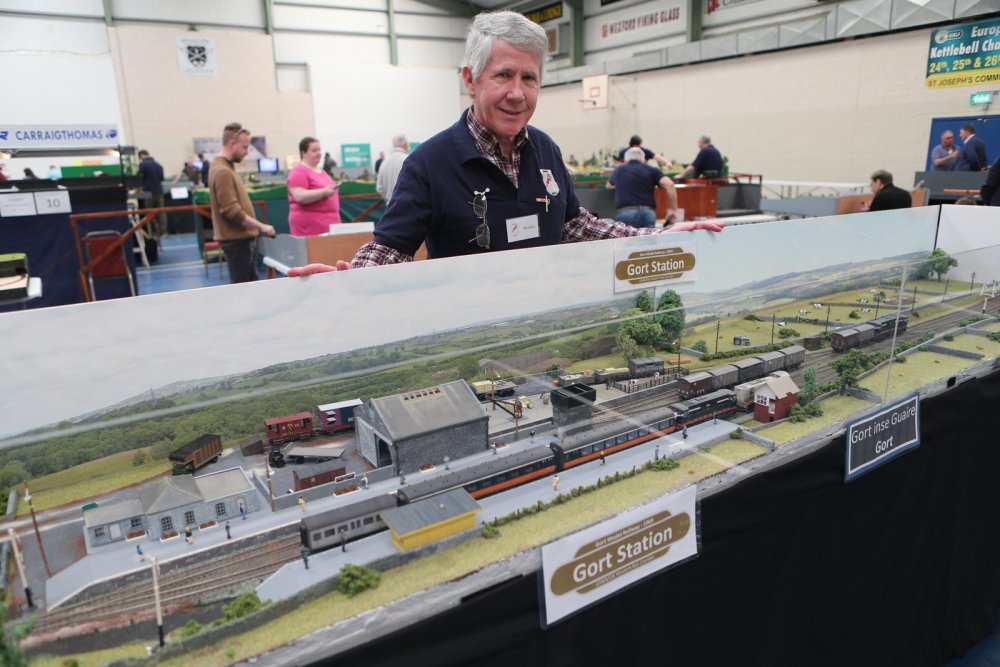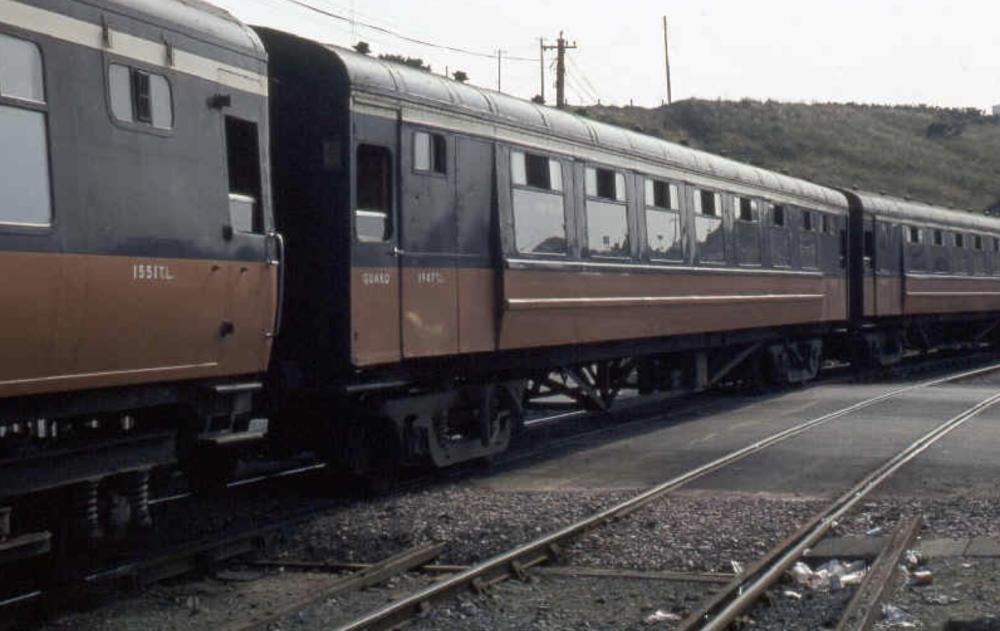-
Posts
7,478 -
Joined
-
Last visited
-
Days Won
149
Content Type
Profiles
Forums
Events
Gallery
Blogs
Store
Community Map
Everything posted by Noel
-

Accurascale's First O Gauge Locomotive???
Noel replied to DJ Dangerous's topic in British Outline Modelling
Personally I’d prefer a proper loco that could haul coaches or rake of two axle wagons. Hence the 141 mention as that could haul resprayed br mk2 O gauge stock or resprayed collets as fake laminates, or any resprayed GWR wagons. Shunters don’t quite fit the bill for that. -

Accurascale's First O Gauge Locomotive???
Noel replied to DJ Dangerous's topic in British Outline Modelling
IMHO, No viable market here for O gauge Irish stock. But I'd nearly shave my head for an O gauge 141 to IRM's standards. But reckon over 3 years you'd sell max 200-300 locos if even that. -
Not bad price for an O gauge steam loco.
-
Yes with these 8k printers they are even better than IMP for resolution. Excellent results @KMCE and excellent CAD work.
-
Or even DCC 800v
-
Yes interesting points. Mind you the dart line faced similar insurmountable obstacles in densely populated parts of the capital, yet they were solved by engineering. At that time we were in severe recession, unlike today when Ireland is now the 6th wealthiest nation on the planet and can afford capital projects that seemed unattainable only 15 years ago. We have to invest heavily now in public transport and at scale, dart underground, airport link, intercity electrification, etc. This is a hundred year investment and the capital costs can be spread over 100 years. Rail is vital to public transport success and electrification vital to cutting CO2 quickly. We've run out of time for the niceties of gradual managed transition to cleaner energy. The raw data suggests we have to act now. Not sure how my grandchildren's generation will cope in a world when billions of displaced climate refugees get on the move. There's loads of alt tech to solve engineering problem such as battery packs to enable trains run shortish distances without pantograph or 3rd rail (eg the Luas in Nice, France as an example has no overhead wires in the city centre scenic spots). Same could be done for the Cork Tunnel, instead of dropping the track bed 6 feet lower as they did along much of the Dart line (eg Dun Laoghaire, Sandymount, Dalkey, Killiney, etc) to get overhead clearance for pantograph. We live in exciting times as all the alt tech has already been invented and proven, we don't need to go back to living in caves nor do without the lights on, rather instead we just need to make intelligent 'adjustments' to how we consume energy and food. alt energy is also the biggest economic opportunity our nation has before it. In 25-20 years time energy could be our major export rather than agri-food, pharma and software. Only time will tell. With Dart and Luas we're already 1/4 of the way there perhaps, especially with extended dart commuter lines using hybrid battery for unnelectrified CWR stretches. Yea but they could dry cloths too up there! The 071s have been incredible work horses and proved to be some investment but they must be getting close to that time they become beyond future economic overhauls. One wonders if there is a plan to replace the Rotem drive units with Hydrogen or Electric units, even Diesel/Hybrids so no emissions when stopped in stations idling for days on end belching out harmful NoX.
-
In time the 22k's, 201s and 071s may also be cut up as they don't meet emissions targets, and diesel will be phased out sooner than we might think as the climate crisis worsens. Hopefully electrification of the main lines is not too far off.
-
No prob. Your right. I’ll stop posting
-
Well Jonathan, 4 years later it got to this first stage of completion. Now for the 2023 extension which includes a fiddle yard pretending to be Tuam station. Thanks for your guidance and encouragement as well the the book 'Rails Through the West' that inspired the creation of this layout.
-
Looking great as ever. 19 wagons.
-

Wexford MRC CLG Exhibition April 30th/May 1st 2023
Noel replied to Irishrailwayman's topic in What's On?
Great sequence of photos encapsulating the show.- 49 replies
-
- 3
-

-

-
- model railway exhibition
- wexford mrc clg
-
(and 1 more)
Tagged with:
-
Found this old video earlier when somebody commented and asked if I’ll be ordering. Chalk and cheese models, the IRM versions will be on another planet. Order placed, looking forward to the IRM versions with great anticipation. This train can be brought up to a higher standard. Still I’ve really enjoyed running these basic resin coaches since 2014.
-

Wexford MRC CLG Exhibition April 30th/May 1st 2023
Noel replied to Irishrailwayman's topic in What's On?
IMG_1994.MOV A short clip at the WMRC show. A short- 49 replies
-
- 11
-

-

-
- model railway exhibition
- wexford mrc clg
-
(and 1 more)
Tagged with:
-
Cheers Stephen. Thank you. [EDIT] PS will order more when the mainline versions are listed.
-
Order placed.
-
@Warbonnet Fran are they all suburban versions or are there any mainline (intercity) versions planned?
-
Ah but baby sitting a special little one is a treasured gift.
-
A few pics of Gort's first ever outing to an exhibition at the superbly organised WMRC exhibition. There were 25 layouts, many absolute stunners. Was honoured to be in such exalted company. Little Siddington in the background behind Gort and in the far distance IRMs stand with the Park Royal 3D sample. (Far away not very small you understand ) View from Athenry end as pax train exits the loop. View from Ennis end as B134 prepares to enter the yard and take some wagons up to Tuam. Drone Shot Glamorous assistant for the weekend. She even learned how to shunt the yard and organise delayed uncoupling of wagons around the yard sidings. Nice touch for the organisers was a lovely badge to mark our first attendance at this exhibition Men at work preparing in the yard as two passing goods trains expected in the next hour. Had so much fun shunting the wagons around the yard and through the shed over the weekend. The Kadee couplings performed almost perfectly as did the uncoupling magnet hidden under the track. In the background is Barry Carses photo from Book 'Rails through the West' that I saw 4 years ago and the photo that inspired reproduction in this layout. All in all really glad we made the trip down. Interesting travelling down in an EV towing a large two axle trailer. But made it easily on a single charge despite a strong head wind. Superb hospitality and the show with the 'Station Cafe' providing a variety of hot food, snacks, and all manner of beverages and loads of tables to sit at and chat with fellow modellers. It was great to meet so many in person face2face and chat rather than type. Like the Chinese the WMRC guys are a truly great bunch of lads. Highlight of the show was chatting in person to folks from this forum and the Facebook model groups. Now to plan Gort's extension programme. Two fiddle yard boards already made, which will allow for more continuous operation for the general public who would find shunting rather boring, especially youngsters. Was really pleased everything still worked reliably after transport. What next for this layout? I've a few areas to finish (signal box facia + gutters + chimney, servo drive and light signals, letter box, one extra uncoupling magnet for the pax loop, point rodding links to points, etc). After that its two drop leaf semi-circular boards for the ends to connect to the fiddle yard boards. Good night. Wreaked tired after an enjoyable weekend.
- 329 replies
-
- 18
-

-

-
Brilliant Jonathan. Were you at Wexford by any chance?
-
Top class realism Rob. You've really captured the atmosphere of Heuston. Very enjoyable to watch.
-
Superb on every level. Love this layout.
-
Yes. 1984 photo (C) Steve Rabone. As I remembered the Park Royals, I never saw them in Tippex myself. https://www.steverabone.com/RailwayPhotographs/ireland_1984.htm Have four of these with Kadee couplings. They will be joined by IRM versions. Two of these, two craven, two laminates and a HLV or GSV and you have an Irish passenger train from the 1960s through to the 1980s. Always mixed rakes of 'all kinds of everything'. Delighted to hear the IRM versions will be lit and have an anti-flicker capacitor. My personal nostalgia memory is main line versions with the big white WC window. Great news this era will be covered and some company for the early livery A classes too.
.png.c363cdf5c3fb7955cd92a55eb6dbbae0.png)



